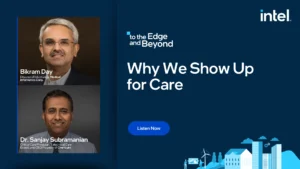Political Opponents in Congress May Find Agreement Over the Benefits of Value-Based Care
Congress may not find a lot of unity to pass legislation. However, there is bipartisan support for value-based care. Melanie Musson, a health insurance expert with USInsuranceAgents.com, reminds providers, “Value-based care improves patient outcome, but it also reduces insurance provider costs.”
Following the midterm elections and the split-party control, experts predict that there won’t be many new laws passed. For health insurance providers, the split control could mean that insurance providers won’t have to scramble to keep up with new rules and regulations. Instead, they could spend the next two years focusing on improving procedures and plans.
There is a chance that both political parties could come together for a shared goal of value-based care. The New England Journal of Medicine (NEJM) Catalyst explains that value-based healthcare rewards physicians and hospital systems for patient outcomes rather than for patient treatment.
Value-Based Care Model
This incentive theoretically pushes healthcare providers to identify risks earlier and assist patients in improving their health before it deteriorates. The value-based model seeks not only to improve patient outcomes but also to decrease the average health insurance cost for consumers.
America’s healthcare system costs have far exceeded the rate of inflation, and most of the population wishes something could be done about it. That may give congress the drive to work together to draft legislation that will push insurance providers to shift focus from treatment to prevention.
Rethinking Best Practices
While dealing with the possibility of new rules isn’t fun, it may be in providers’ best interest to shift their focus in that direction before it’s required.
Research backs up the fact that prevention costs less than treatment. The Affordable Care Act pushed healthcare and insurance providers in that direction, but better incentives may help to move that focus forward.
Insurance providers have many rules to adhere to, especially if they offer Medicare Advantage plans. But there is room to incorporate best-value practices even under stringent guidelines.
How Preventative Care Saves Insurers
There are many case studies demonstrating how covering and incentivizing preventative care can save insurance providers. For example, when cancer is caught early, treatment options take less time and require fewer hospitalizations. Cancer that isn’t discovered until later stages may require two times or more treatments and extensive hospitalizations.
Since insurance providers are responsible for paying most of these costs, they can save money by elevating preventative care.
Insurers should always seek to improve their methods, and the bipartisan support of value-based care should prompt them to evaluate how they can incorporate that model into their coverage.







